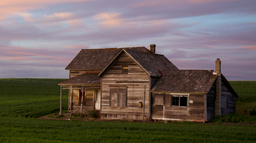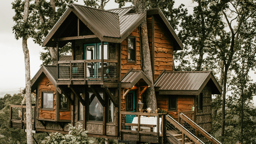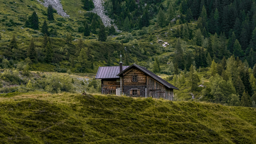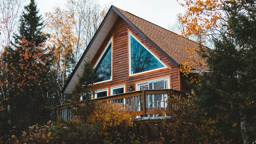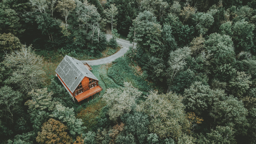
From a living tree made into items for your cabin, like structural framework, cabinetry, furnishings, decorative trim, an energy source and countless other things, wood has played an important role in civilization from its earliest beginnings. Unlike some more recent building materials, our knowledge and experience of how to care for wood has a long and well documented history.
The key to proper wood treatment starts by considering how it is being used. Structural wood needs to be protected from the elements but may not need to be aesthetically finished. Cabinetry and interior trim, usually well protected from nature, generally needs more attention paid to capturing and displaying its beauty. Exposed beams, posts and log walls that offer both structure and appearance need both types of care.
No matter how it’s used, wood is an organic material that needs protection from the forces of nature. Its main enemies are moisture, sun, insects and mold. Protective treatment will vary depending on exposure and climate. In the dry desert southwest, you can find roof beams that have survived hundreds of years with no other protection than keeping direct sunlight away. In humid climates, frequent wetting can reduce the lifespan of exposed wood to just a few years. Here are two keys to wood-treating decisions that keep wood strong and beautiful no matter how it’s used:
Keep it dry. Moisture is woods number one enemy. Moisture softens wood, inviting everything from insects to mold and fungus to dine.
Keep it shaded. Ultraviolet rays in sunlight break down wood, softening it and turning its color from rich hues of gold, amber and brown to mottled gray and black. This breakdown process also invites moisture and the enemies that follow.
See also How to Stain Your Cabin Exterior
Here are some additional do’s and don’ts for maintaining the integrity and appearance of the wood in your cabin or home:
1. Place wood above ground moisture.
Design new buildings so the wood is protected from splashing or prolonged exposure to melting snow. Raised masonry foundations, wide roof overhangs and porches are an excellent start.
2. Update your exisiting buildings.
Consider modifications of existing buildings, such as awnings or porch additions, to increase protection of exposed wood siding and trim.3. Use naturally durable woods.
Consider using woods that have natural resistance to decomposition. Cedar, cypress and white oak all are known for high natural decay-resistance. However, recognize that no wood is immune to the effects of nature, and while some woods may offer reduced maintenance in some situations, in many environments some sort of protection is needed.4. Check the quality of your finishes.
Inspect the condition of seals and finishes of exterior wood frequently. Spray exterior wood with a garden hose and look for areas that remain moist or appear dark after wetting. Try pressing a finish nail, awl or small screwdriver into suspicious spots. If the spot allows for easy penetration, there’s a problem that needs addressing right away.5. Use products designed for the specifical situations you face.
For exterior wood, a breathable water repellent finish protects wood while allowing trapped moisture to escape. Look for products that also include insect and mold protection. In general, deck products are designed to protect wood while handling foot traffic. Products designed to prevent sun damage will contain UV inhibitors.6. Be environmentally conscious.
Consider the health and environmental impacts of the wood treatment products you choose. To stop or prevent the natural decomposition process, many treatment products include toxic ingredients. Toxic to insects and mold is good; toxic to people and pets is not. Read and follow warning labels closely. Use products only as they are intended.
7. Be proactive.
Take action before you see definite signs of a problem. If you notice damp, blackened areas on siding or other exposed wood following a heavy or prolonged rain, the breakdown process is already well advanced.8. Remember to give your interior wood some love.
Windows allow ultraviolet light to strike wood floors and cabinetry. Wood in kitchens and baths can face frequent wetting or high moisture levels, creating ideal conditions for wood decomposition. Make sure baths and kitchen areas are well ventilated. Use finishes that delay moisture absorption, allowing fans time to remove moist air and the opportunity to clean up spills or splashes.9. Know your options.
If you do encounter wood decay, there are simple steps to treat it. Products such as epoxy wood repair kits can repair minor damage without destroying appearance.See also Cabinology 101: Carpenter Design Logic




